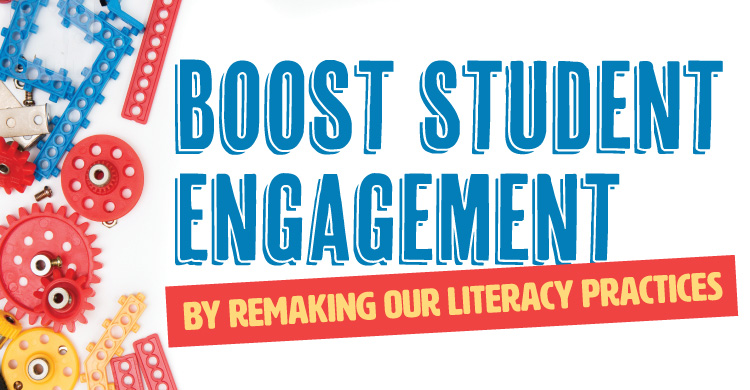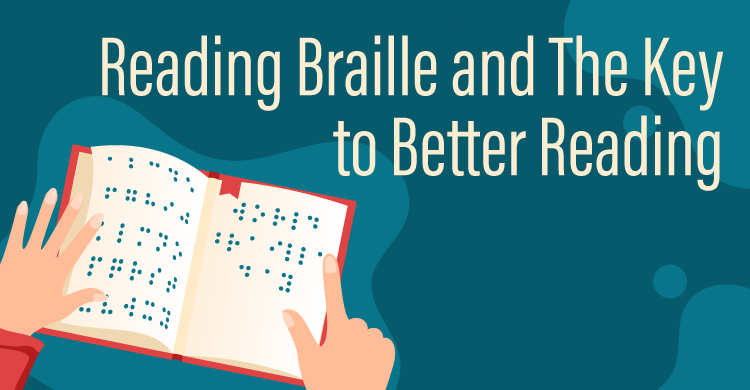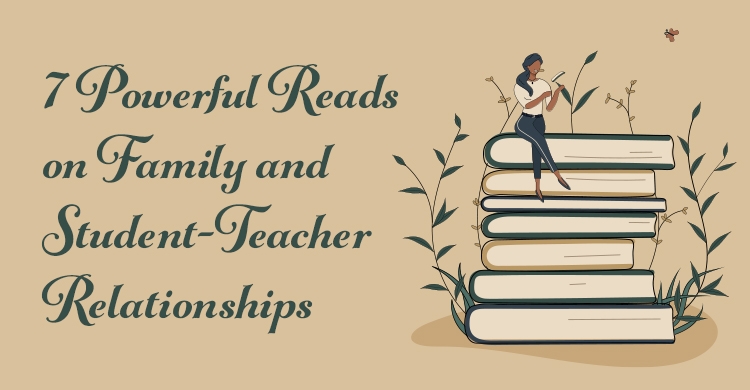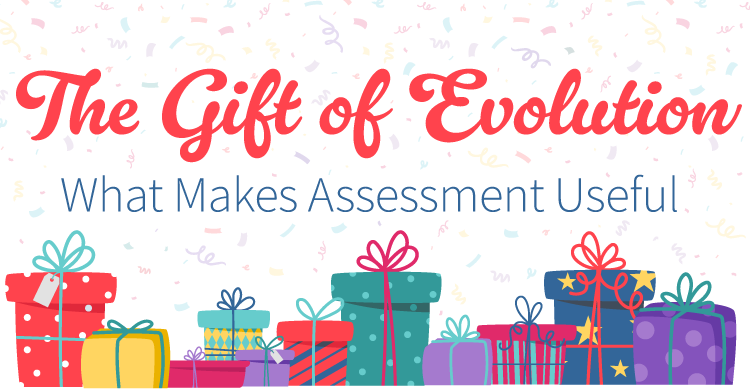Based on Remaking Literacy: Innovative Instructional Strategies for Maker Learning
At the end of a hallway, one classroom is buzzing with excitement. More than 50 students are packed in the room, sitting on desks and the floor, with others perched on stools. They are intently waiting to connect virtually with an author.
They loved his books and giggled at his illustrations. Now they are counting down the days until his next book is released. Each student has jotted a question that they are hoping to ask the author. Waiting in anticipation, the kids cheer when the author comes on screen and starts their virtual meet-up.
Making connections to literacy doesn’t come naturally for every learner, but educators can create opportunities that can boost interest in reading and writing and get students loving literacy. Not every student may have grown up in a literacy-rich home. Maybe some students don’t find comfort in curling up with a good book. How can we adjust or remake our practices to boost student interest in literacy?
It is our responsibility to tap into student interest and create that connection for our students. By infusing creative, hands-on experiences, offering technology twists, and creating real-world connections, we can motivate students to read and increase engagement in active literacy learning.
Infuse Creativity
In an eighth-grade English classroom, students are working with LEGOs. Teams are building scenes from the novel they are reading. These scenes will support the stop-motion animation videos that students are creating in response to a book chapter they’ve been assigned. This new learning represents their understanding of characters and setting. It shows that they can recognize mood and identify themes. The students designed the backdrops and wrote the scripts. Students are working collaboratively, building speaking and listening skills, while developing their comprehension skills as well.
There are so many hands-on ways we can boost student interest in literacy just by offering some creative options. Tactile experiences within our literacy classrooms can increase student understanding, communication, and a positive attitude toward school. We can embed creative choices into our instruction or in the assessments we design for students. Infusing creativity can be one way that students develop an increased interest in literacy.
Reading
Incorporate creative options in the classroom during whole-group read-alouds, small-group reading instruction, or through partner reading activities. Consider the ways students can use simple materials like modeling clay, pipe cleaners, or cardboard to build their predictions, craft story characters, or design the setting of a story.
Offer materials during reading time that can increase student engagement and tap into their creativity. House materials in a bin or in a special place in the classroom so students can access these items and make them a part of their reading routine. Create a reading environment that supports creative thinking and flexibility for learners by encouraging hands-on creation before, during, or after reading.
Vocabulary
Boost your vocabulary instruction by trying hands-on experiences. Can students create visual representations of robust vocabulary words by sketching what each word means? When students take ownership of the meaning of words, they increase both interest and understanding. Make available materials like colored pencils, markers, paper, and crayons for sketching words and word meanings.
Vocabulary can also be added to high-interest materials like building bricks or board games. Label bricks with rich vocabulary so as students build, they can review words, meanings, and create sentences while building structures. Add vocabulary words to traditional board games or card games, reinforcing vocabulary development and usage. For more vocabulary strategies, take a look at this post from Angela Peery.
Writing
Do students shrug or say “ugh!” when it’s time to write in your classroom? Infuse some creative hands-on manipulatives to get reluctant writers engaged in the writing process. Try “tinker trays” as a hands-on way for students to get creative within the writing process. Foster creative thinking by setting out tabletop trays with small items like beads, yarn, stones, and feathers. Tinkering with simple items may help students to focus on their work and generate new ideas.
Active reading strategies like these can support effective reading and writing instruction while increasing student motivation to engage in literacy. Check out this post from Kathy Perez on other hands-on, minds-on approaches to literacy instruction.
Tie In a Tech Twist
Effective teachers use technology to enhance their instruction, not replace it. They skillfully look for opportunities where technology tools can increase student engagement. We can do this within our literacy classrooms too! Consider the visual vocabulary strategy shared in the previous section. Students can also create digital images to demonstrate an understanding of key vocabulary using online tools like Canva or Buncee. These tools allow students to think creatively about their literacy knowledge and design images to show what they know.
Our “YouTube generation” of learners loves watching and creating videos. Tap into this interest, and use videos to support literacy development. Think about the literacy skills that can go into creating a video. Students can brainstorm ideas, develop characters, and write a script. As they create the video, they are not only building reading and writing skills, but their speaking and listening skills as well. These options can be differentiated based on student strengths, interests, and needs.
Boosting interest in literacy through technology happens when students are using technology to create rather than consume. When students can use their imagination, design, and create around literacy, they can have fun while also building important skills.
Create Real-World Connections
We know that good readers create connections when they are reading—connections to text, self, and the world. We can expand these connections by building relationships that can support literacy learning.
When we provide students with real-world connections, sometimes that is the missing link they need to increase motivation to read. These types of connections can occur in different ways:
- Connections to content that is meaningful and relevant
- Connections to information that is high-interest for students
- Connections to authors, illustrators, and other literacy experts
If we are to create these connections for our students, we need to take the step toward being a connected educator ourselves. Having a physical or virtual professional learning network will allow us to readily establish these connections.
Connecting to meaningful content for students means that we know their interests and have access to books and resources that will expand their interests in reading and learning. Using online resources and curating these for students is important, especially in the elementary grades. Connecting with authors and others in the literacy field (like the educators in the opening vignette of this blog) helps students to see the importance of building literacy skills, but also provides a connection to a literacy role model who can encourage growth and provide motivation for young readers and writers.
Ready to Remake?
If you are looking for more ways to incorporate creative, hands-on options into your classroom, check out my book Remaking Literacy: Innovative Instructional Strategies for Maker Learning (2019). I share both high-tech and low-tech ways to engage young learners in literacy. By combining rich children’s literature and hands-on opportunities in the classroom, our students can increase interest and motivation in all things literacy. You can also access free reproducibles and other resources connected to the book.
[author_bio id=”2115″]







